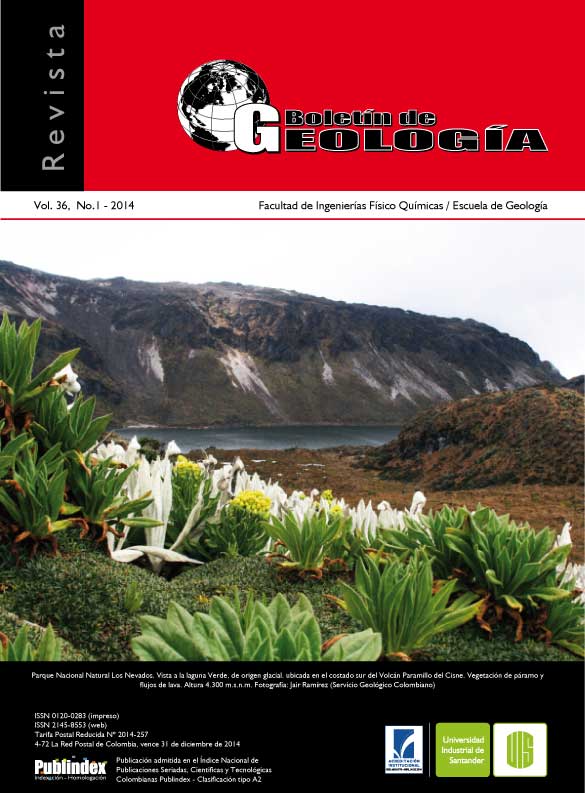STRONTIUM ISOTOPES CHEMOSTRATIGRAPHY FROM SOME EOCENE-OLIGOCENE SUCCESSIONS IN THE SAN JACINTO BELT AND THE LOWER MAGDALENA VALLEY
Published 2014-05-22
Keywords
- 87Sr/86Sr,
- Cenozoic,
- San Jacinto Fold Belt,
- Lower Magdalena Valley
How to Cite
Abstract
The San Jacinto Folded Belt and Lower Magdalena basins have become major targets on recent exploratory campaigns, for fossil fuels, in northern Colombia. Despite the potential of these sedimentary basins in terms of oil and gas production, although to date the evolution of genetically correlative successions within these basins is still not fully understood. This is mainly due to the occurrence of transtential tectonics affecting this area, which has resulted in potentially diachronic sedimentary records.
In this work we use carbonate Sr, C, O isotope stratigraphy and multielemental stratigraphy from three sedimentary successions along the San Jacinto Fold Belt (SJFB) and the Lower Magdalena Valley (LMV), northern Colombia to further contribute to the understanding of the genetic evolution of the sedimentary records in such basins. 87Sr/86Sr values of 0.707444 to 0.707598 characterize the Eocene-Oligocene Toluviejo Formation (SJFB basin). Those values are lower than any value reported for Cenozoic carbonate successions worldwide and, thus could not be used to infer their depositional ages. Preliminar 143Nd/144Nd compositions expressed as ƐNd = 2.67 suggests that these anomalously 87Sr/86Sr values are the result of continental waters draining Caribbean related undifferentiated rocks displaying these compositions in western Colombia. These anomalous 87Sr/86Sr values along with their depleted δ13C values however can be used as geochemical fingerprints to regionally differentiate and identify carbonates belonging to the Eocene-Oligocene Toluviejo Formation along the SJFB basin. The Cienaga de Oro and Porquera formations, which outcrop along both basins, display 87Sr/86Sr values between 0.708231 to 0.708423 and 0.708352 to 0.708474, respectively. These values suggest an Aquitanian – Burdigalian age for their deposition. They also suggest a coeval depositional age for these Formations, which display important differences in their sedimentary environment.
